You're about to explore the history of Fruit of the Loom, a renowned fashion brand founded in 1851 as B.B. and R. Knight Corporation in Rhode Island. Initially gaining popularity with its high-quality muslins, the brand made a significant mark in the fashion industry by introducing its trademark in 1856. Over the years, Fruit of the Loom has continuously innovated, launching products like multi-pack boxer shorts and the playful Underoos, while navigating challenges such as its bankruptcy in 1999. The brand was acquired by Berkshire Hathaway in 2002, which helped it regain stability and refocus on sustainability, making a notable impact on the textile industry. Fruit of the Loom's enduring legacy is a testament to its adaptability and unwavering commitment to quality in the fashion world. To understand the full scope of their journey, consider the key events that led to these significant milestones.
Company Overview
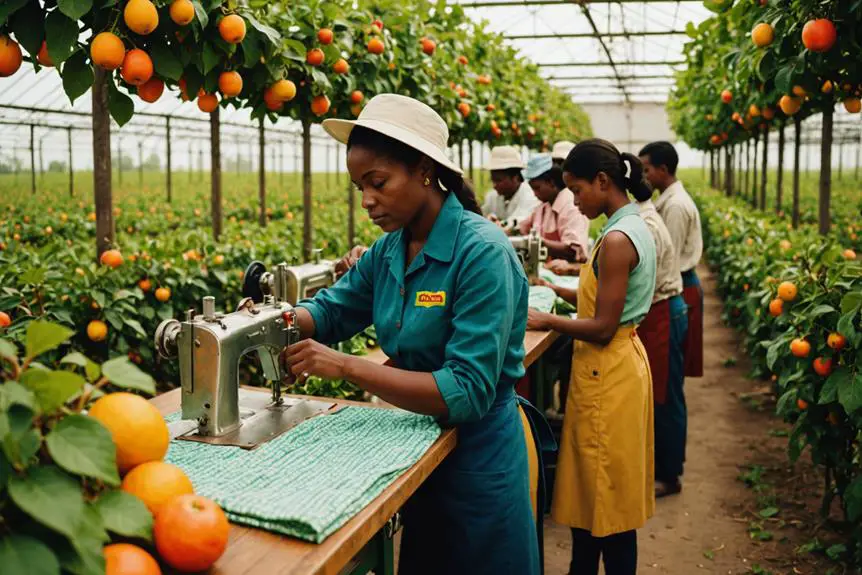
Fruit of the Loom has established itself as a notable player in the apparel industry since its founding in 1851. Founded by brothers Benjamin and Robert Knight in Rhode Island, the company initially focused on producing high-quality cotton textiles. By 1856, they introduced the brand name "Fruit of the Loom," and in 1871, they secured its trademark, solidifying their commitment to quality and brand recognition in the market.
As an underwear manufacturer, Fruit of the Loom specializes in a range of products, including T-shirts, fleece, and casualwear. Based in Bowling Green, Kentucky, the company has expanded its footprint considerably over the years. In 2002, it became part of the Berkshire Hathaway Corporation, acquired for approximately $835 million. Under the leadership of CEO Rick Medlin and Chairman John Holland, the company has grown its portfolio through strategic acquisitions, including Russell Brands, LLC in 2006 and Vanity Fair Intimates in 2007, now known as Vanity Fair Brands.
With over 32,400 employees globally, Fruit of the Loom is recognized for its commitment to sustainable practices and innovation, ensuring it remains a competitive force in the apparel industry.
Founding Years
In the mid-19th century, the textile industry in America underwent significant transformation, and the establishment of B.B. and R. Knight Corporation marked a pivotal moment. Founded in 1851 by brothers Benjamin and Robert Knight in Warwick, Rhode Island, the company started its journey as a textile mill focused on producing high-quality fabrics. In 1856, the brand name "Fruit of the Loom" was introduced, inspired by the beautiful apple varieties created by Rufus Skeel's daughter. This branding choice not only captured a sense of freshness but also established a visual identity for the company.
The same year, Fruit of the Loom made its first production and sale of muslins, laying the groundwork for its future success. By 1871, the company achieved a significant milestone by securing its trademark registration, U.S. patent number 418, solidifying its position as one of America's oldest brands. In 1875, the iconic label featuring a combination of peach, pear, and grapes was adopted, further enhancing brand recognition. Through these founding years, Fruit of the Loom established itself as a formidable player in the textile industry, setting the stage for future innovations and growth.
Early Innovations
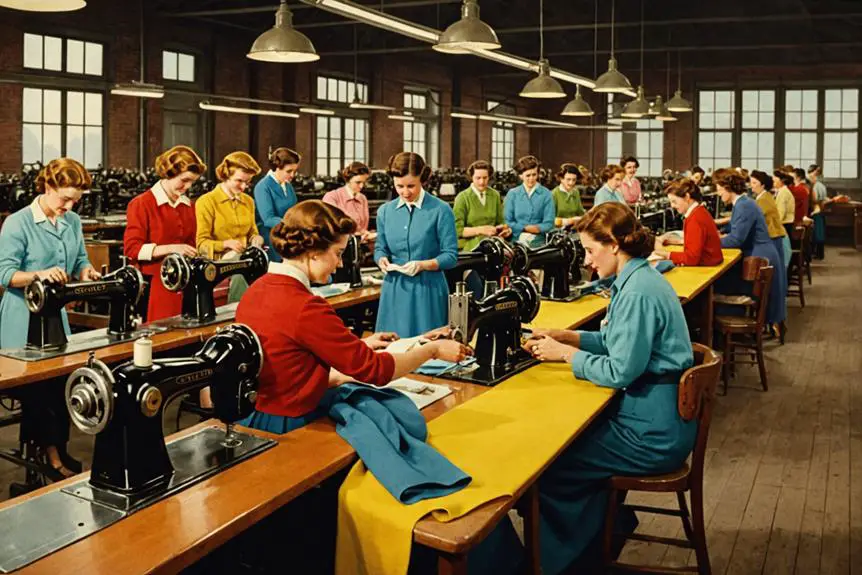
Throughout its history, the innovations introduced by Fruit of the Loom have considerably shaped the apparel industry. One of the brand's first significant moves came in 1891 when it introduced an Unconditional Guarantee for consumers. This innovation not only set a precedent for quality assurance but also built trust between the brand and its customers. Fast forward to 1940, the launch of multi-pack boxer shorts revolutionized the underwear market, offering consumers greater value and convenience in their purchases.
In 1941, during World War II, Vanity Fair, a subsidiary of Fruit of the Loom, showcased versatility by producing silk parachutes, a demonstration of the brand's ability to adapt to societal needs. The late 1970s marked another pivotal moment when the company introduced Underoos in 1978—decorated underwear aimed specifically at children, tapping into a new market segment. By 1983, the expansion into women's intimates further solidified Fruit of the Loom's position as a thorough apparel provider, moving beyond its initial focus on men's underwear. Each of these innovations played a vital role in defining the brand's legacy within the industry.
Marketing Strategies
With a keen understanding of market dynamics, Fruit of the Loom has employed a variety of marketing strategies that have markedly elevated its brand presence. The brand made its television advertising debut in 1959, markedly enhancing visibility through its commercials on NBC's Today Show. This early entry into televised advertising laid the groundwork for future campaigns.
In 1975, the "Fruit Guys" campaign introduced animated fruit characters, which not only boosted brand recognition but also effectively engaged consumers, leading to a notable increase in market share. Celebrity endorsements, such as those from sportscaster Howard Cosell in the 1960s, further enhanced brand credibility, appealing to a wider audience.
Innovative marketing techniques, particularly the introduction of multi-pack boxer shorts, revolutionized consumer buying habits, making these products a staple in underwear purchasing. Through targeted and creative advertising campaigns, Fruit of the Loom achieved an impressive 98% market recognition, effectively doubling its market share in the underwear segment during the 1970s. These strategic moves demonstrate the brand's commitment to adapting and evolving within a competitive landscape, ensuring its continued relevance and success.
Corporate Acquisitions

Fruit of the Loom's strategic acquisitions have played a pivotal role in shaping its corporate landscape and expanding its market reach. The company's acquisition by Berkshire Hathaway in 2002 for approximately $835 million marked a notable shift, providing financial backing and a new strategic direction. This partnership laid the groundwork for future growth, particularly in the apparel sector.
In 2006, Fruit of the Loom enhanced its portfolio by acquiring Russell Brands, LLC for $600 million. This acquisition enabled the company to penetrate the athletic apparel market more effectively. A year later, the purchase of Vanity Fair Intimates for $350 million further diversified its offerings, leading to the creation of Vanity Fair Brands.
These acquisitions not only broadened product lines to include activewear and intimate apparel, but they also contributed to Fruit of the Loom's vertical integration model. Streamlining manufacturing and distribution processes across various product lines has allowed the company to operate more efficiently. Overall, these strategic acquisitions have notably shaped the brand's history, positioning Fruit of the Loom as a formidable player in the competitive apparel industry.
Challenges and Recovery
The challenges faced by Fruit of the Loom in the 1990s serve as a stark reminder of the volatility inherent in the apparel industry. The company experienced significant setbacks, including plant closures and a dramatic decline in market share, ultimately leading to a Chapter 11 bankruptcy filing in 1999 after a staggering net loss of $576.2 million. This crisis highlighted the need for a robust recovery strategy.
In 2002, the acquisition by Berkshire Hathaway for approximately $835 million marked a pivotal turning point. This financial infusion provided the stability required for restructuring. Post-acquisition, Fruit of the Loom concentrated on enhancing operational efficiencies and pursued strategic acquisitions, such as Russell Brands, LLC in 2006 and Vanity Fair Brands in 2007. These moves not only broadened the brand's portfolio but also reinforced its market position.
As a result of these efforts, Fruit of the Loom experienced a remarkable recovery, with revenue surging from $500 million to $2.5 billion over 15 years. This resurgence illustrates the brand's resilience and adaptability, transforming challenges into opportunities for growth and sustained success in the competitive apparel landscape.
Sustainability Initiatives

Since its acquisition by Berkshire Hathaway, the focus on sustainability has become a cornerstone of Fruit of the Loom's strategic initiatives. The company clearly recognizes the importance of reducing its environmental impact and has taken significant steps in this direction.
- Walmart Sustainability Award: In 2019, they received this accolade for their commitment to sustainable practices.
- Sustainability Report: Launched in 2020, this report details their environmental impact and future sustainability goals.
- Fruitful Futures Global Sustainability Plan: This initiative, also introduced in 2020, sets science-based targets to reduce carbon emissions by 2030.
- Adaptability during COVID-19: The brand pivoted to create reusable cloth face coverings, meeting both health needs and sustainability goals.
Product Evolution
Building on its commitment to sustainability, Fruit of the Loom has continually evolved its product offerings to meet changing consumer needs and preferences. The brand revolutionized the underwear market in 1940 with the launch of multi-pack boxer shorts, fundamentally altering consumer buying habits by promoting convenience and value. In 1978, the introduction of Underoos marked a significant expansion into children's decorated underwear, blending fun with practicality and appealing to a younger demographic.
The product evolution continued in 1983 with the introduction of women's intimates, further diversifying the brand's range and catering to a broader consumer base. Significantly, the 1991 introduction of an Unconditional Guarantee set a new standard for product assurance, strengthening customer loyalty and satisfaction.
Throughout the years, consistent innovations in fabric and design have allowed Fruit of the Loom to stay at the forefront of the apparel market. By utilizing advanced manufacturing techniques, the brand not only enhances the quality of their underwear but also aligns with contemporary consumer expectations for comfort and performance. This commitment to innovation and responsiveness to market trends guarantees that Fruit of the Loom remains a trusted name in apparel.
Modern Brand Presence
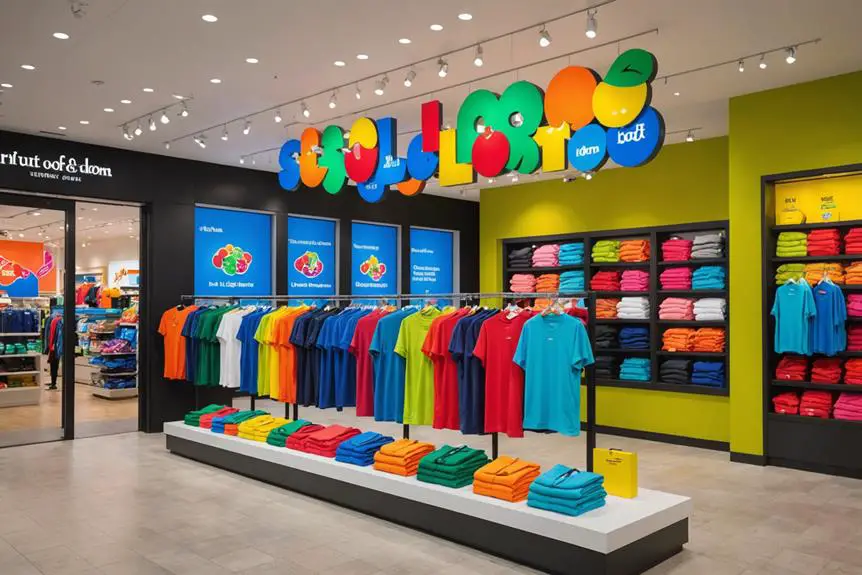
How does Fruit of the Loom maintain its relevance in today's competitive apparel market? The brand strategically adapts to modern consumer demands while preserving its legacy of quality and comfort. As a leading apparel company under Berkshire Hathaway, it emphasizes sustainability and customer engagement, ensuring it resonates with today's eco-conscious shoppers.
- Eco-friendly materials that align with your values
- A robust online presence for easy shopping access
- Engaging marketing campaigns that speak to diverse audiences
- Products designed for comfort and durability
Fruit of the Loom's commitment to sustainable practices reflects a keen understanding of market trends, as consumers increasingly prioritize environmentally friendly options. The brand's strong distribution network enhances its market presence, placing its offerings in major retail chains and accessible online platforms. This availability fosters customer engagement, as shoppers can easily find what they need.
Additionally, the user-friendly website supports customer loyalty by providing size guides, promotional discounts, and dedicated customer support. By focusing on these areas, Fruit of the Loom successfully navigates the complexities of a rapidly evolving apparel market, ensuring it remains a go-to choice for quality clothing across generations.
Legacy and Impact
Fruit of the Loom has carved out an enduring legacy in the American apparel landscape since its inception in 1851. As one of the oldest brands, it profoundly shaped the American textile industry with innovations like multi-pack boxer shorts and the Unconditional Guarantee. These moves not only revolutionized consumer purchasing habits but also set a precedent in trademark laws, establishing a trust that consumers expect from reputable brands.
Despite facing challenges, including a bankruptcy filing in 1999, the brand's acquisition by Berkshire Hathaway in 2002 revitalized its operations. Today, Fruit of the Loom symbolizes resilience and adaptability, continually embracing modern sustainability practices. Their first Sustainability Report in 2020 and the Walmart Sustainability Award in 2019 highlight this commitment.
| Legacy Aspect | Impact |
|---|---|
| Innovation | Changed consumer habits in apparel |
| Resilience | Revived post-bankruptcy under Berkshire |
| Sustainability | Commitment through eco-friendly practices |
| Market Presence | Leading position in affordable clothing |
Frequently Asked Questions
What Is the Story Behind the Fruit of the Loom?
The story behind Fruit of the Loom involves its creative name inspired by fruit themes, trademark registration, and strategic marketing. You'll find it embodies a blend of innovation and resilience throughout its long-standing presence in apparel.
What Are Some Fun Facts About the Fruit of the Loom?
You'll find that Fruit of the Loom has a rich legacy. It was trademarked in 1871, launched iconic ads with "Fruit Guys," and was the first to feature a woman in underwear on television.
Why Is Fruit of the Loom Called That?
Fruit of the Loom's name reflects a commitment to quality and natural materials, inspired by diverse apple varieties. The cornucopia logo symbolizes abundance, enhancing brand identity and recognition among consumers, emphasizing high-quality cotton products.
What Was the Original Logo for Fruit of the Loom?
The original logo featured a cornucopia overflowing with peaches, pears, and grapes, symbolizing abundance and quality. This design effectively represented the brand's name and established a strong visual identity that still resonates today.
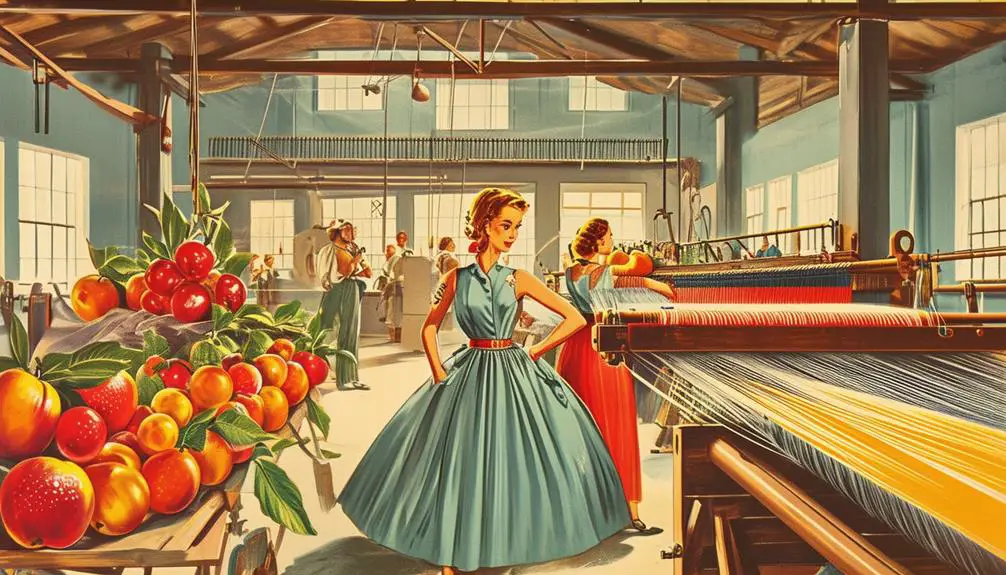



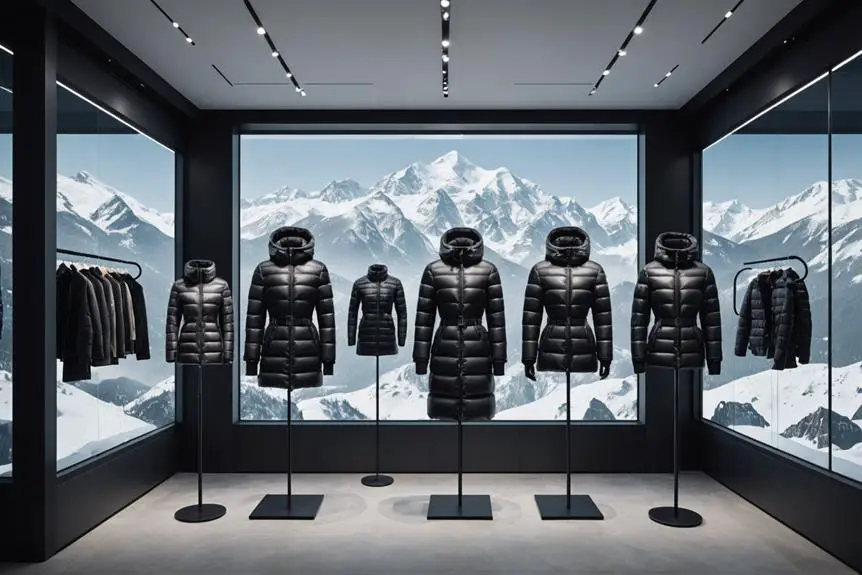
Your point of view caught my eye and was very interesting. Thanks. I have a question for you.
Appreciate it! A lot of information!
casino en ligne
Appreciate it! An abundance of tips.
casino en ligne
Seriously all kinds of good data!
casino en ligne
You actually reported this really well.
casino en ligne
Well expressed certainly. .
casino en ligne
You stated it wonderfully!
casino en ligne
Amazing loads of amazing info!
casino en ligne
Thanks a lot! A lot of posts.
casino en ligne
Thanks a lot, Loads of tips!
casino en ligne
Terrific stuff, Kudos.
casino en ligne